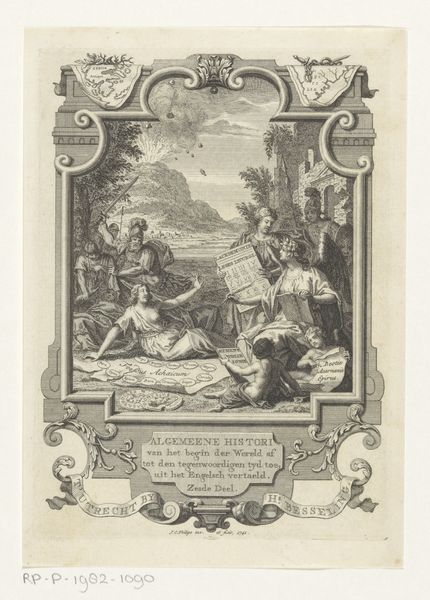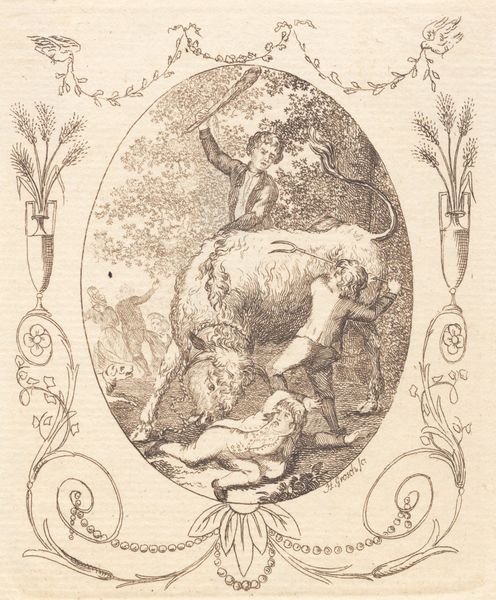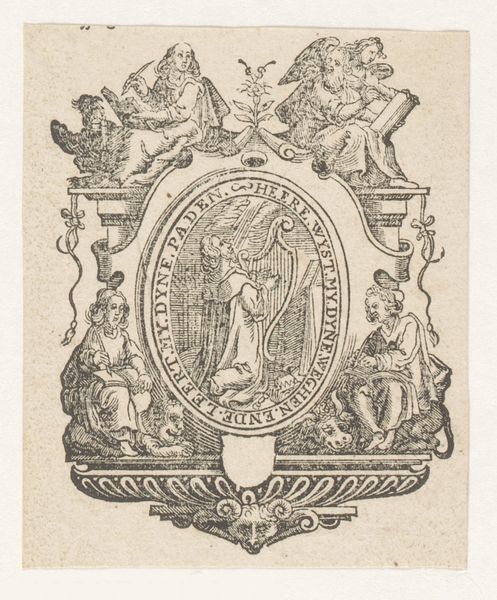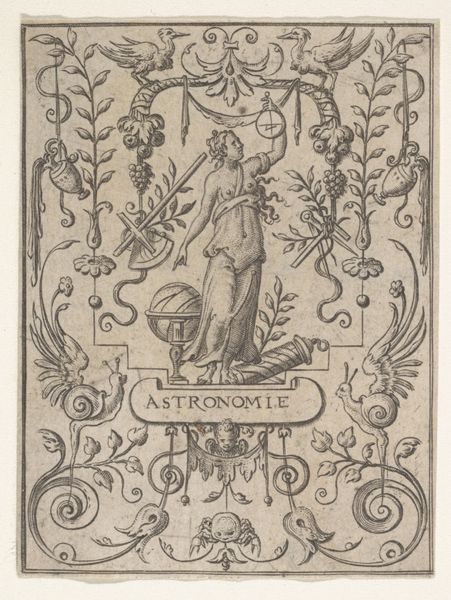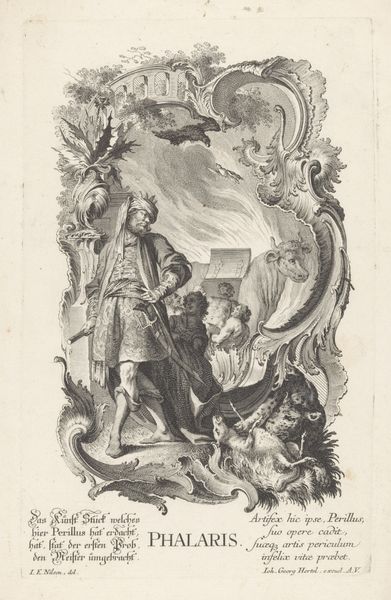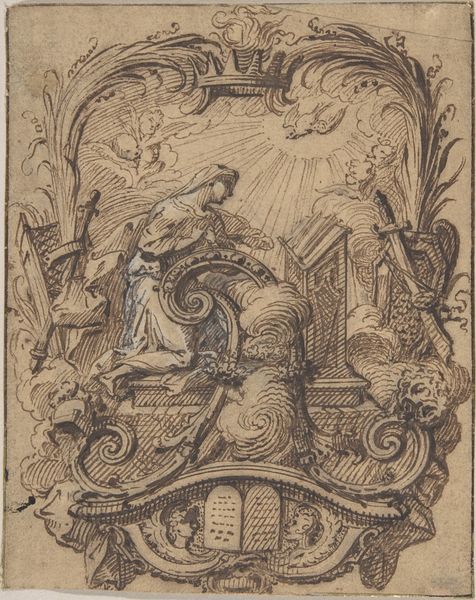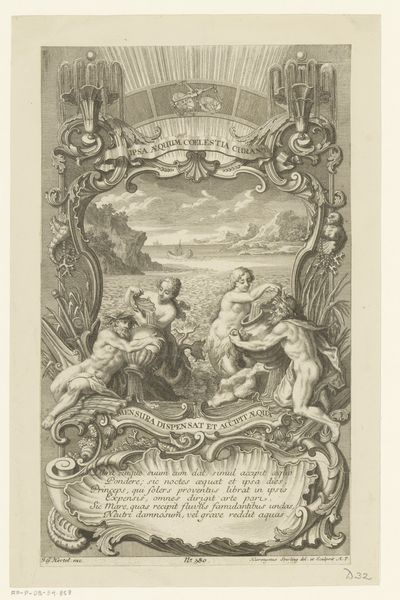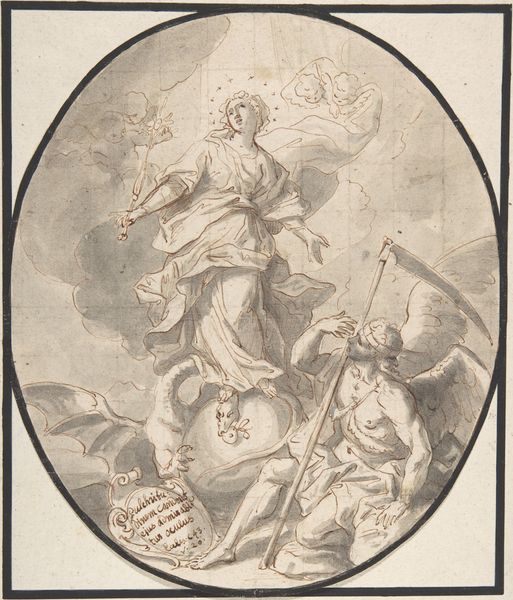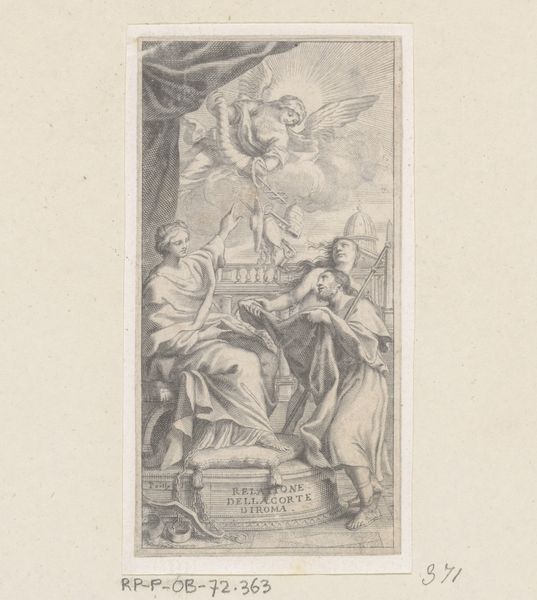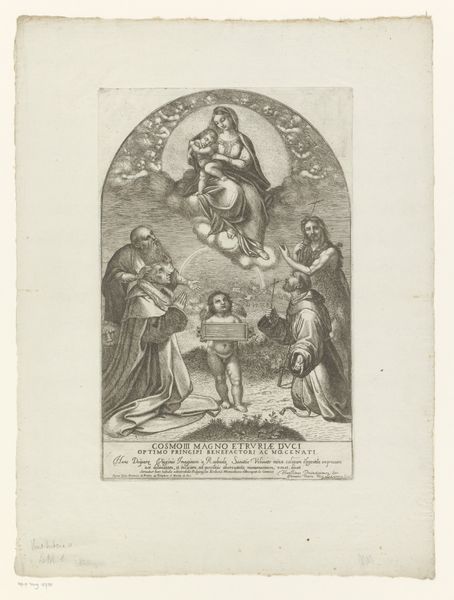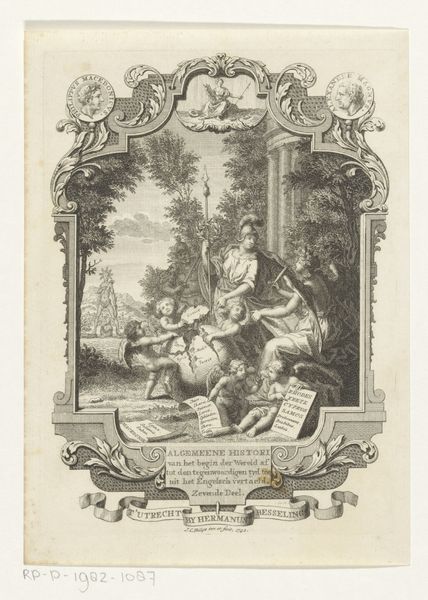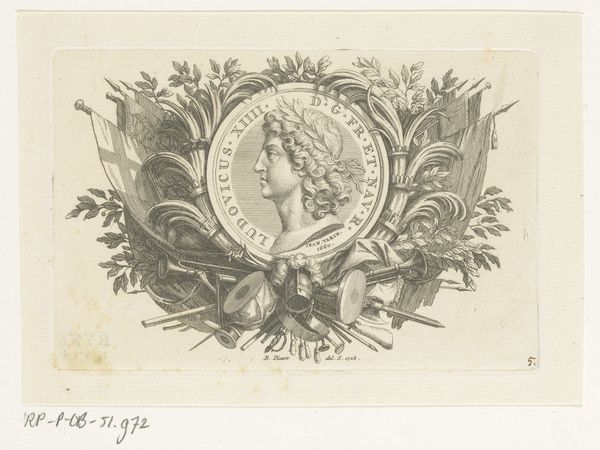
print, etching, engraving
#
allegory
#
baroque
# print
#
etching
#
engraving
Dimensions: height 88 mm, width 77 mm
Copyright: Rijks Museum: Open Domain
Curator: Here we have Jan Punt's "Vignet met Harmonie" from 1744, an etching and engraving. What are your initial impressions? Editor: The first thing that strikes me is the contrasting textures achieved through the meticulous lines. The soft, billowy clouds supporting the central figure against the crisp, ornamental border creates a fascinating interplay of light and shadow. Curator: Absolutely. Considering its place within the 18th century and the tumultuous political climate of Europe at the time, the allegorical imagery becomes quite resonant. The central female figure playing her harp represents, of course, Harmony. Editor: Indeed, "Harmony" is boldly emblazoned across the top. It looks to me like it attempts a stabilization of forms in the musical instruments overhead, juxtaposed with the flowing drape of her gown, an evocation of classic Baroque ideals of beauty, perhaps offering an escapist vision amid worldly challenges. Curator: And observe the Latin inscription "Permulceo et Stimulo"—to soothe and to spur on. The work engages in the sociopolitical function of art during periods of intense historical and social changes. Music, therefore, acted as a conduit for expressing social sentiments and bolstering moral and communal connections during volatile times. Editor: An intriguing idea. Speaking purely formally though, observe how all elements—the figure, instruments, and text—are contained within an ornate frame. It's a closed composition; a world onto itself defined by crisp lines, as an absolute dedication to this sense of ideal Harmony. Curator: True. However, note the almost direct gaze of Harmony. In doing so, Punt implicates the viewer in this symbolic contract and this underscores how integral the artwork was intended to be to viewers of that time and still for audiences today. Editor: Fascinating how our divergent lenses bring different aspects into focus. My reading stems from the aesthetic decisions; yours is the societal conditions within its context. Curator: Precisely. In examining its cultural resonance and symbolism of visual elements we have gained some insight, hopefully, in this work as a cultural object of the 1740s and its relevance to current events. Editor: Yes. Looking more closely, we come to realize that it contains a captivating convergence of artistic craft. A window, both beautiful and thought-provoking, opens into the formal structure and sociopolitical intent through its artistry.
Comments
No comments
Be the first to comment and join the conversation on the ultimate creative platform.
